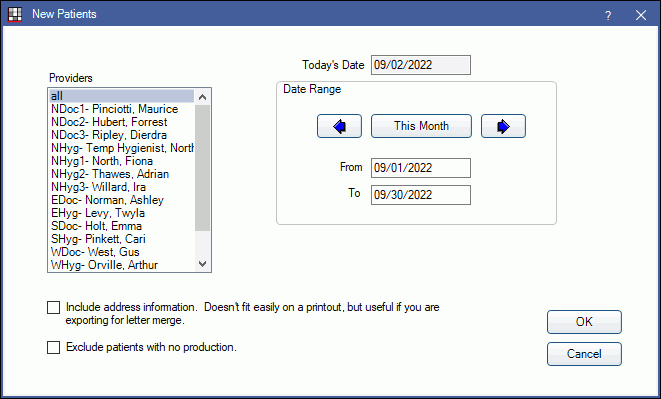

ORDER BY ProcCode DESC - Orders the rows in descending order. In the ApptConfirmed category, it clearly shows that the unconfirmed status uses a 19 to represent it in all other parts of the program. Alternatively, you could go to the definitions table, where the 19 originated and order the table by category. It is easy to see that 19 is the correct value to use by looking at the entire appointments table, finding an appointment with unconfirmed status and switching to the raw format which shows the numeric representations for columns like this. For instance if you wanted to select appointments with unconfirmed status, it would look like this: SELECT * FROM appointment WHERE confirmed='19'. In this example, the raw format is the same as the human-readable format, but often you will need to use the raw value in your WHERE statement. (N-codes are used in the example database for NoFee codes and are not ADA recognized). Because the second part of the WHERE statement limited results to codes with values 'less than or equal to' D9999, codes like N1234 would not show up. The first means 'not' and the second means 'less than or greater than' the result is the same. SELECT ProcCode, AbbrDesc,Descript FROM ProcedureCode WHERE ProcTime = '/X/' AND ProcCode'/X/'. This would not normally be used.įor a list of tables and columns in the Open Dental database, see Programming Resources, Database Documentation. The number specifies a limit on the number of rows to return. As many columns can be listed as needed.Ĭan follow the name of a column in the ORDER BY list to indicate it should be sorted in descending order (Z-A).įollowed by a number. If a second column is listed, then items with identical values in the first column will be further ordered according to the values in that column. A-Z, 0-9) depending on the type of data in the column. The rows will be sorted in ascending order (e.g.

One or more column names are listed after this command. If the expression is false, it will not be present. If the expression is true for that row, then it will be included in the rows returned.

Puts a limitation on the number of rows returned by specifying an expression after the WHERE. If you only wish to select certain columns, you would have to list them here instead of using the star. This usually follows the select command to specify that all columns are being selected. As with all the other commands, it does not need to be capitalized, but usually is for clarity. Never try to change the actual data in the database from here using INSERT, UPDATE, DELETE, DROP, TRUNCATE, or any other similar command.Īs a starting point, here are the basic elements of an SQL command, and how they are used: SELECT Note: When writing queries for reports, you should only use SELECT commands which return a table. This section may be useful for writing Queries.


 0 kommentar(er)
0 kommentar(er)
